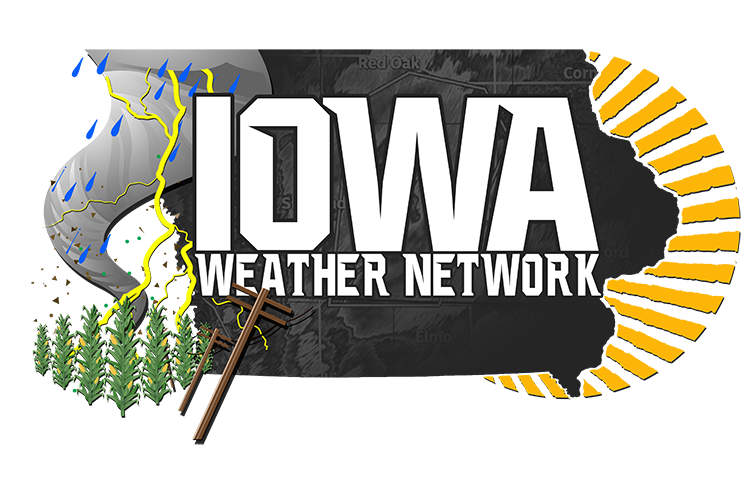← Previous April 17, 2024 10:30 AM
FOUS30 KWBC 171530 QPFERD Excessive Rainfall Discussion NWS Weather Prediction Center College Park MD 1130 AM EDT Wed Apr 17 2024 Day 1 Valid 16Z Wed Apr 17 2024 - 12Z Thu Apr 18 2024 ...THERE IS A MARGINAL RISK FOR EXCESSIVE RAINFALL FOR PORTIONS OF THE GREAT LAKES, OHIO VALLEY AND WESTERN PARTS OF THE NORTHEAST... ...16Z Update... Minor adjustments were made to the southern edge of the previous MRGL issuance across the Ohio Valley into the Mid Atlantic. This was in conjunction with the latest trends in hi-res deterministic and the QPF footprint within the NBM. Mid-level shortwave will rotate around the base of the closed 5H reflection over the Great Lakes and propagate eastward over northern IL/IN/OH before pivoting across PA by the end of the forecast cycle. Locally heavy rainfall from progressive convection will allow for flash flood concerns within that area bordering Lake Erie down to about I-70 where the best forcing will occur. This will cross over an area of lower FFGs due to recent rainfall events causing antecedent conditions to be primed for easier exceedance thresholds. The area of focus will be over northeast OH into western PA where even 1 and 3-hour FFG markers are hovering around that 1-1.5" range which is very low and a possibility within today's setup. 12z HREF EAS probability field is between 20-40% for exceeding 1" total rainfall between Cleveland to Erie, aligned well with the ML algorithms from both the GFS and ECMWF for the targeted location for best chance of impact. As a result, did not feel there was a need to adjust the northern extent of the risk area as it solidifies the forecast and maintains continuity. Across the Deep South, conditions have been fairly tame with regards to the previously highlighted area. 12z CAMs remained "hot" with the QPF interpretation, but radar and observational trends negate the former runs and the newer hourly guidance is more in- line with what is occurring which would be well below any chance of a MRGL risk issuance. Will continue to monitor, but the threat of flash flooding is trending closer to 0% than it is to the bottom of the Marginal Risk threshold (5%). Kleebauer ...Previous Discussion... Showers and thunderstorms tracking across the Ohio Valley may produce periods of heavy rainfall. Much of eastern Ohio and western Pennsylvania have Low FFG which does maintain an elevated threat for excessive rainfall and local flooding concerns. Model consensus has accumulations less than 2 inches across this area. Multiple rounds of convection will track through eastern portions of Pennsylvania and into New Jersey could reach 1 inch within areas of low FFG indices, especially in the 3 and 6-hr FFG intervals. The Marginal Risk area that was already in effect was maintained for this period. Campbell/Kleebauer Day 2 Valid 12Z Thu Apr 18 2024 - 12Z Fri Apr 19 2024 ...THERE IS A MARGINAL RISK FOR EXCESSIVE RAINFALL FOR PORTIONS OF THE SOUTHERN PLAINS AND MISSISSIPPI VALLEY... A surface low pressure system and associated front will develop across the Central Plains and advance toward the Mid-Mississippi Valley and convection will fire off as the moist return flow from the Gulf of Mexico drawls northward into the system. Locally heavy rain will setup over Missouri and points southwest to central Texas. The better concentration of the heavy rain will focus across Missouri and surrounding locations. Recent rains have lowered some of the FFG across this region and may have an increased sensitivity to additional rain/heavy rain. A Marginal Risk area covers part of northeast Texas to southern Missouri and western Kentucky. Campbell Day 3 Valid 12Z Fri Apr 19 2024 - 12Z Sat Apr 20 2024 ...THERE IS A MARGINAL RISK FOR EXCESSIVE RAINFALL FOR PORTIONS OF THE SOUTHERN PLAINS AND LOWER MISSISSIPPI VALLEY... The low pressure system will continue to have its associated front boundary draped across the Midwest and Plains during period while dryline sets up from the Oklahoma Panhandle to the Big Bend area. Convection is expected to be along and south of the front over the Southern/Central Plains and Lower Mississippi Valley with the higher QPF near/east of the dryline in west-central Texas. The latest guidance varies quite a bit in regard to placement and how much will fall however consensus does suggest the higher amounts to focus mainly over Oklahoma and a sliver of Arkansas. The environment may be supportive for 0.50+ inch/hour rates which in turn elevated the risk for local flooding concerns. A Marginal Risk area spans the Big Bend area northeast to central Arkansas. Campbell Day 1 threat area: https://www.wpc.ncep.noaa.gov/qpf/94epoints.txt Day 2 threat area: https://www.wpc.ncep.noaa.gov/qpf/98epoints.txt Day 3 threat area: https://www.wpc.ncep.noaa.gov/qpf/99epoints.txt
